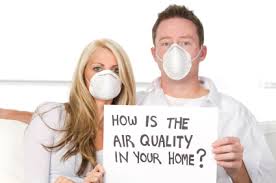Indoor air quality is an important aspect of your home comfort that you cannot forego. It has strong implications on your overall health and that of your family, and can render the entire house unfit for occupation. Problems such as excess moisture, excess infiltration through ducts or walls, and inadequate air exchange can significantly impact the general wellbeing of the members of your family.
When you see condensation, mold, or ice building up in excessive amounts, just know that an air quality problem could be lurking somewhere in the background. Below are the signs to look out for.
Inadequate Air Exchange
Odors can be good indicators of how air travels through your house and the adequacy of ventilation. If odors persist for a very long time, it may mean that the source keeps on releasing them or the air that carries the odors doesn’t have an elaborate exit route out of your house.
Therefore, check on the persistency of the odors and find out where they are generated to sort out the problem.
Excess Infiltration
When air infiltration becomes excess, you may feel a draft especially during winter as you near exterior walls. Due to low indoor humidity levels, excess infiltration may cause frequent static electricity discharges. On poorly sealed boundaries, you may see tracks of dark dust. These are usually caused by dusty air that moves through the wall and drops the dust whenever its velocity slows.
If your air conditioning and heating equipment is located in the attic, your ductwork may cause infiltration. The way to solve this is to seal the leaks in your windows and walls as well as the connections between your attic and house.
Excessive Air Exchange
If you live in places with a dry climate or where the winters are dry and cold, it may become uncomfortable staying in the house due to dry indoor air. Before rushing out to get a dehumidifier, check the fan speed of your ventilation equipment. If you live in a humid, hot climate, the high ventilation rates can increase indoor humidity to a level that the AC cannot control. At this point, you need supplemental dehumidification.
Once you establish that you have air quality problems, the next step is to get in touch with your local HVAC technician who is trained in air quality control. They will help you map out all the affected areas and come up with a strategy to minimize or even eliminate the problem.





